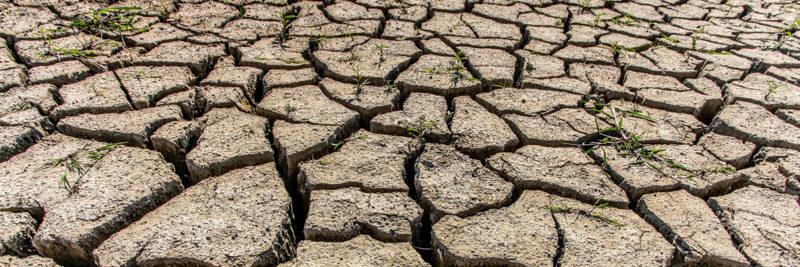Is Your Water Utility Prepared for Climate Change?

As featured on Impeller | Water News from Xylem
With extreme weather events, from flooding to droughts, some water utilities are already facing the effects of climate change. Yet many utilities are unprepared for how climate change could affect their water resources and water management. As a leading water technology provider, Xylem can help utilities increase resiliency in their operations.
There are a number of challenges to preparing for climate change, which is why perhaps some utilities have taken few steps to become more resilient. According to the “2017 State of the Water Industry Report,” produced by the American Water Works Association (AWWA), nearly half of utilities are unprepared for climate change:
“Forty-five percent of utility personnel reported their utilities do not include any potential impacts from climate variability in their risk management or planning processes, down from 51% in 2016. Forty-one percent responded that planning at their utilities includes climate change effects while 14% indicated their utility is in the process of including climate change in their planning processes.”
Climate change that puts water resources at risk
Many of the effects of climate change will have a direct impact on the water industry, and water utilities in particular. Depending on the location, climate change could lead to increasing temperatures and evaporation rates, changing precipitation patterns, extreme weather events, and rising sea levels.
According to the AWWA report, these changes will affect water resources, leading to degraded water quality and treatment challenges, droughts, less groundwater recharge, and saltwater intrusion into coastal aquifers. Increased precipitation will also affect water management, leading to stormwater management challenges, coastal flooding, and increased risk to infrastructure.
Planning for the unknown at the local level
Preparing for climate change, however, can be difficult without knowing exactly how it will affect water utilities in their region. A recent report prepared for the Water Utility Climate Alliance examines how some water utilities are handling this. The report, Embracing Uncertainty: A Case Study Examination of How Climate Change is Shifting Water Utility Planning, reports on how 13 water agencies are responding to climate change scenarios:
“As water agencies began considering climate change in their planning, many found that planning for multiple futures is the key to preparing for the decades ahead. Agencies have begun using planning methods that identify a set of management actions to meet the needs presented by a range of plausible futures (i.e., are robust across plausible futures).”
To help utilities plan for climate change, in whatever forms it takes, the U.S. Environmental Protection Agency (EPA) has developed the The Climate Resilience Evaluation and Awareness Tool. Its aim is to help water, wastewater and stormwater utility owners and operators discover and assess the risks they may be exposed to. The EPA has also developed additional resources under its Climate Ready Water Utilities Initiative (CRWU). This includes case studies, workshops, and climate science data.
Four strategies for urban resilience
Xylem works closely with water utilities and communities to help them prepare for and manage climate-related water challenges. In a new white paper, Xylem breaks down resilience-building strategies into four types of actions that need to be taken: ensuring water security, strengthening critical infrastructure, driving response and recovery, and engaging community stakeholders.
For many cities, ensuring water security means managing water variability and declining availability. Technologies for water reuse can play a crucial role in helping utilities adapt to shortages in water resources. They enable utilities to produce high-quality water at a lower life-cycle cost than developing a new water supply.
In Los Angeles, for example, Xylem is installing a recycled water solution that will help recharge the city’s stressed drinking water aquifers. Between 2011 and 2015, California experienced a record drought caused by record-low precipitation levels and record-high temperatures. Xylem’s water reuse technology will help Los Angeles meet growing water demands and safeguard existing water supplies.
Emergency response and quick recovery
When natural disasters happen, it is vital that cities can respond and recover quickly in order to limit their impact. Between 2000 and 2012, natural disasters caused $1.9 trillion in damage globally. Xylem has helped communities around the world recover quickly from disasters, with rapid dewatering, diligent emergency services, and innovative reconstruction efforts.
In 2013, for example, a massive rainstorm swept through Buenos Aires Province, Argentina, and caused extensive flooding. In one area, 40 centimeters of rain fell in just two hours. Throughout the entire crisis, Xylem provided 24-hour service. Its Godwin pumps dewatered several neighborhoods, even those experiencing power failure, as well as a critical oil refinery.
Xylem also helps utilities prepare for the worst with emergency response plans. In 2016, unprecedented rainfall in Memphis, Tennessee, led to the collapse of a sewer main. The city activated its emergency response plan, and Xylem installed a sewer bypass in just six days. Xylem’s rental solutions also enable utilities to get the right equipment and expertise fast. Read about the company’s rapid response to recent flooding in the Balkans and Texas.
Learn more in Xylem’s new white paper on urban resilience:
Building Resilience: Creating Strong and Sustainable Cities and Communities

